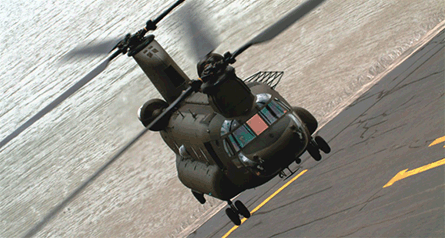On the eve of celebrating the 50th anniversary of first flight, the US Army took the first step towards launching the fourth major growth version of the Boeing CH-47 Chinook heavylift helicopter.
A modernisation programme office was opened in early September at the acquisition headquarters for the army aviation community at Redstone Arsenal, Alabama, CH-47 product manager Col Bob Marion said on 21 September.
The army is already considering options for introducing a new CH-47H variant in the 2020 timeframe, succeeding the CH-47F and MH-47G models launched about a decade ago, said Maj Gen William Crosby, programme executive officer for army aviation.
 |
|---|
© USAF |
With the CH-47F/G models, the army introduced the Rockwell Collins common avionics architecture system (CAAS) cockpit and the BAE Systems digital advanced flight control system (DAFCS).
Asked to describe options for configuration upgrades under review for a CH-47H, Marion declined. The army is still developing requirements for the fourth-generation of the Chinook family, he said.
Boeing, however, has previously listed several options for a "growth Chinook". A minimum effort would increase the helicopter's lift by 1t by optimising the existing rotor hub and transmission. A re-engining would require a larger investment, but replacing the 4,870shp Honeywell T55 with a 7,500shp engine could improve overall lift capacity to almost 29,500kg (65,000lb).
The most ambitious possibility would involve widening the fuselage to allow the aircraft to lift as much as 34,000kg, including the airframe. But this design approach would require the army to waive a standing requirement for any army aircraft to be transported by a Boeing C-17A strategic transport.
Any CH-47H modernisation programme would be launched after the F/G-model production line expires in 2019. Boeing and the army are currently in the early stages of discussing options for a second multi-year deal that would be awarded in fiscal year 2013, with current plans to buy 155 aircraft over a five-year period.
Funding for a second multi-year deal, however, is not assured. The army's decision will be based on the result of a new wave of budget reductions now under review, Crosby said.
Source: Flight International























